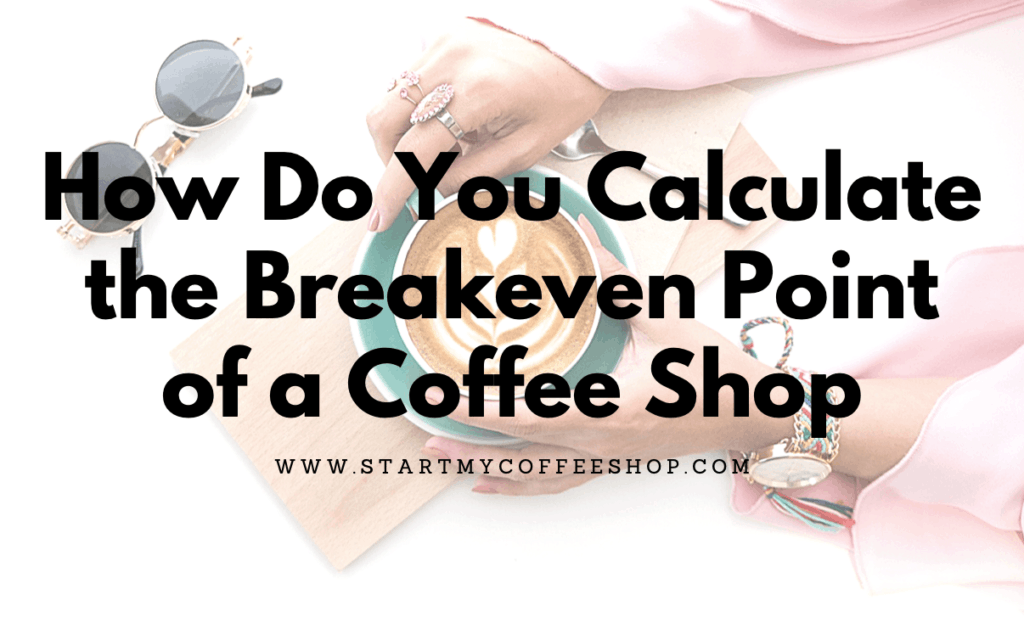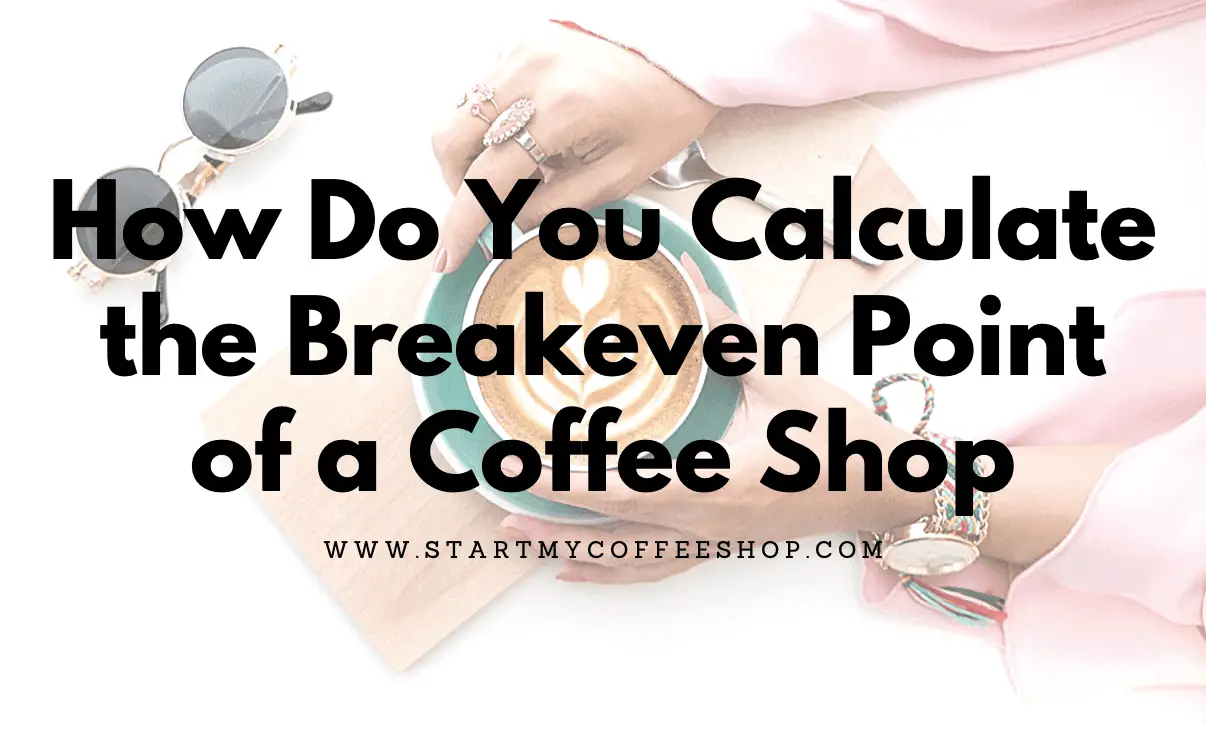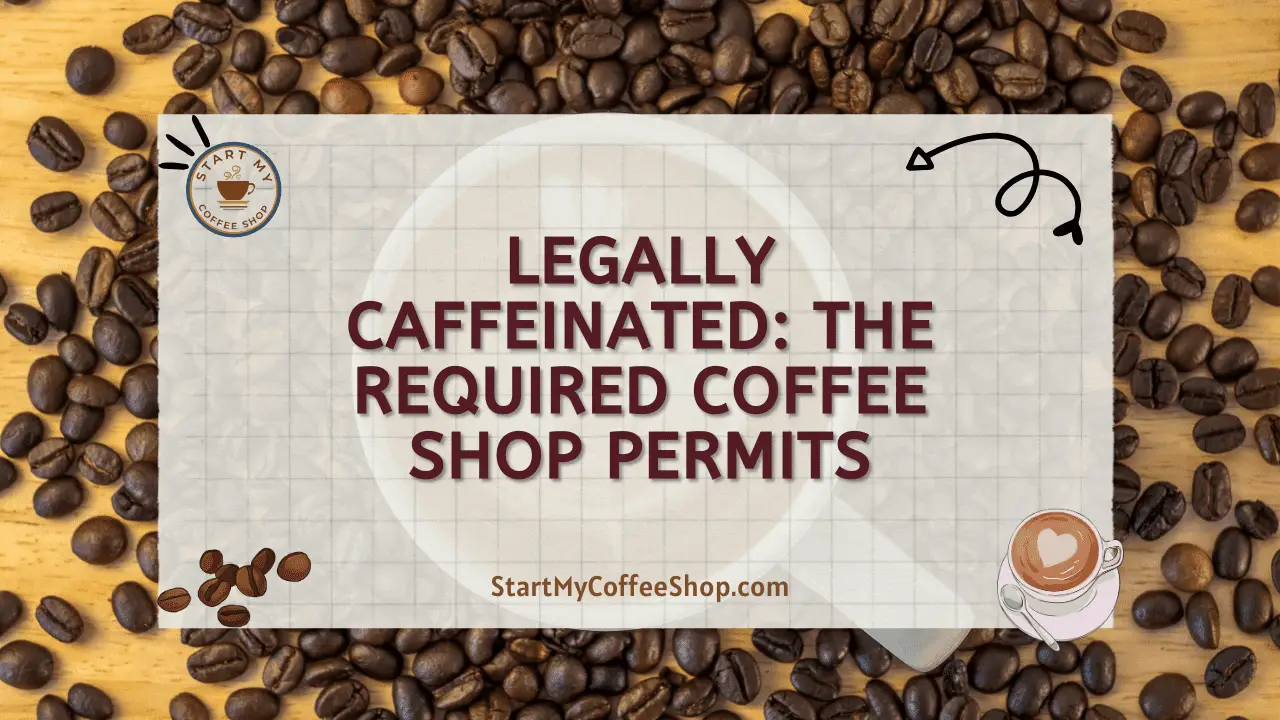A coffee shop is a great way to make a living. However, to create a successful business, even though the number one focus is to create profit, it is very important to understand the breakeven point.
Here is the formula that you will use to calculate the breakeven point of a coffee shop.
Breakeven Revenue = Fixed Costs/Gross Margin Percentage
Knowing your breakeven point will allow you to learn how many cups of coffee you will need to sell a day to breakeven and not lose any money.
How do I figure out my Fixed Costs and my Gross Margin Percentage?
Before you can determine your breakeven revenue, you will need to first know your fixed costs as well as your gross margin percentage. Your fixed costs are the sum of all your operating costs, this includes wages, salaries, rent, utilities, supplies, and more.
Your gross margin percentage is calculated by dividing your gross margin by the selling price. The gross margin is calculated by subtracting the sales price (cost of the cup of coffee) from the cost (cost to make the cup of coffee).

Here is an example of how the breakeven point works. Let’s say that the fixed costs for your coffee shop come out to $250 per day. Let’s say that you are selling a cup of coffee for $2.50 per cup and that it costs 0.85 to make that one cup of coffee.
The first thing you will need to determine will be your gross margin for your coffee shop. The selling price minus the cost equals your gross margin. So your formula will read:
2.50 – 0.85 = 1.65
So your gross margin for your coffee shop is $1.65.
The next step is to know what your gross margin percentage is for your coffee shop. The gross margin percentage is calculated by dividing your gross margin by the selling price of your cups of coffee. Your formula will look like this:
1.65/2.50 = 66%
Now that we have all of our numbers we can figure out how much money is needed for the coffee shop to break even. The breakeven point is the amount of money you need to make each day to not lose any money. This is calculated by dividing the fixed costs by the gross margin percentage. Thus, this will be your formula:
250/66% = 378.78
For the coffee shop to break even, the coffee shop will need to collect $379 a day. So how many cups of coffee will you need to sell to collect $379 a day? One more simple formula. You will take the amount needed per day to break even ($379) and divide it by the selling price of a cup of coffee ($2.50) and this will determine how many cups of coffee you will need a sale per day to breakeven. This is how your formula will look:
379/2.50 = 151.6
So, for your coffee shop to break even, you will need to sell 152 cups of coffee each day to make $379 in revenue to cover the $250 daily fixed costs.
Check out how much you should be charging HERE.
Break-Even Point for a Newly Opening Coffee Shop
What if I am a new coffee shop that is just starting up? How do I determine my breakeven point?
You would figure out the breakeven point the same way you would figure it out if you have been in business for many years. Do keep in mind you will have more costs and you will have to add your start-up costs into the equation.
 Your start-up costs will include if you had to take out any loans to get your business up and operating. Other start-up costs will be if you had to remodel the location where you will have your coffee shop.
Your start-up costs will include if you had to take out any loans to get your business up and operating. Other start-up costs will be if you had to remodel the location where you will have your coffee shop.
Additional costs will be any coffee machines, espresso machines, tables, chairs, point of sale system, plates, or cups. If you are planning on having a drive-thru you will also have to have an additional point of sale system at the window, a menu at the intercom where your customers will order.
You may even provide barista training, in which you will have to pay your trainees while they are in training. You will also have your licenses, permits, and general liability insurance to get your coffee shop opened up and operating smoothly.
The best way to calculate your break-even point for your new coffee shop business is to first get three pieces of information. You will need your start-up costs, your operational costs, and your revenue projections.
If you are purchasing a pre-existing coffee shop, you can always look at the past sales history to help you get your revenue projections. However, if your coffee shop is being built from scratch, you will have to get an estimate. It is recommended that you partner with someone in the accounting field who is familiar with the coffee shop industry.
Here is an example of how this may look. Let’s say you had to borrow $40,000 to get our coffee shop opened and operating. By the time interest is calculated, you are looking at a monthly payment of $500 for ten years.
Let’s say that your fixed cost is $250 per day (not calculating the loan), the selling price is $2.00 per cup of coffee, and the cost is $0.55 per cup of coffee. $500 divided by thirty days equals $16.67 per day. So to make sure you are breaking even, you would just add $17 to your fixed costs.
$250 + $17 = $267
So for the next ten years, your fixed costs will be $267.
Remember, your break-even revenue is determined by dividing your fixed costs by the gross margin. The gross margin is calculated by subtracting the selling price of the cup of coffee and the cost of what it takes to make that cup of coffee. The gross margin percentage is determined by dividing the gross margin by the selling price of the cup of coffee.
Thus, your gross margin will be $1.45. Formula: $2.00 – $0.55 = $1.45
Your gross margin percentage will be 72.5%. Formula: $1.45/$2.00 = 72.5%
Your breakeven revenue will be $368.28 (or $369). Formula: $267/72.5% = $2368.28
This means your coffee shop would have to make a total of 185 cups per day for your coffee shop to break even. Formula: $369/$2.00 = 184.5
Final Thoughts
As in any business, the main goal of your coffee shop is to gain a profit. However, knowing your breakeven point will help you to understand how much your coffee shop needs to produce to keep your coffee shop from going under.
If you are just starting up or purchasing a pre-existing coffee shop, it may take a little more work to get that breakeven point. You are either going to have to create an image for the community, or you are going to have to re-create an image for the community. 
If you have to borrow a loan from the bank like in the above example, think about what will happen in ten years. The loan is only for ten years and if you continue to act as if you still have that bank loan, you will end profiting each month as opposed to just breaking even.
Another way to help your coffee shop to break even is to give the customer options. Offer multiple styles of coffee such as an iced coffee, a latte, or even a frozen coffee. You may have customers who like to order tea instead of coffee. Some people like to have a crescent or a bagel with their coffee. Having these options for your customers will most likely have the customer ordering more than just a cup of coffee. Which in return, will help your coffee shop to break even.

Frequently Asked Questions
It is important to understand the breakeven point so that you are not losing money every month. Knowing your breakeven point will help you to determine the size of the premises your coffee shop will require, the number of coffee machines that will be required, and the number of staff that will be necessary.
If you see that you are not breaking even and that you are losing money, you will want to reevaluate your budget. You may need to cut back on some of your expenses. The last result may be to raise the selling price of the cups of coffee.
To learn more on how to start your own coffee shop checkout my startup documents here
Please note: This blog post is for educational purposes only and does not constitute legal advice. Please consult a legal expert to address your specific needs.

Hi! I’m Shawn Chun
My adventure in coffee began when I first launched my first coffee shop back in the early 2000s. I had to figure out so many things on my own and to make it worse within 2 years of opening two large corporate coffee chains moved in just blocks away from me!
As I saw smaller and even some larger coffee shops in the neighborhood slowly lose customers to these giant coffee chains and slowly close up shop, I knew that I had to start getting creative…or go out of business.
I (like you may be) knew the coffee industry well. I could make the best latte art around and the foam on my caps was the fluffiest you have ever seen. I even had the best state-of-the-art 2 group digital Nuova Simonelli machine money could buy. But I knew that these things alone would not be enough to lure customers away from the name brand established coffee shops.
Eventually, through lots of trial and error as well as perseverance and creativity I did find a way to not only survive but also thrive in the coffee/espresso industry even while those corporate coffee chains stayed put. During those years I learned to adapt and always faced new challenges. It was not always easy, however, in the end, I was the sole survivor independent coffee shop within a 10-mile radius of my location. Just two corporate coffee chains and I were left after that year. All told the corporate coffee chains took down over 15 small independent coffee shops and kiosks and I was the last one standing and thriving.
Along the years I meet others with the same passion for coffee and I quickly learned that it is not only “how good a barista is” that makes a coffee shop successful, but the business side of coffee as well.
Hence why I started this website you are on now. To provide the tools and resources for up and coming coffee shop owners to gain that vital insight and knowledge on how to start a coffee shop successfully.
Stick around, browse through my helpful blog and resources and enjoy your stay! With lots of LATTE LOVE!
Shawn






